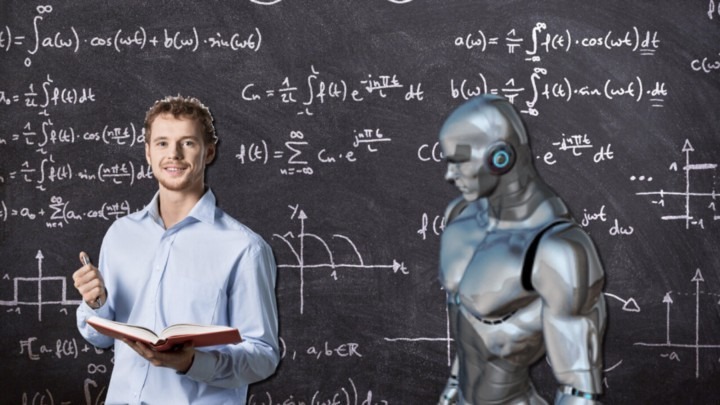It used to be the norm. A stack of identical worksheets. Same problems. Same order. Same expectations. A one-size-fits-all mentality that treated every student like a carbon copy of the next. But here’s the catch—students aren’t the same. One thrives on visual puzzles. Another craves logic-based riddles. A third panics at the sight of fractions. Yet until recently, education kept throwing the same math tasks at them all, expecting similar outcomes.
The result? Frustration. Boredom. A silent slipping through the cracks. And here’s where artificial intelligence enters the stage to overhaul your child’s primary math tuition. Tailored algorithms. Adaptive learning. Real-time feedback. We’re entering a new age. The age of personalization of math tasks for each student.
The Shape-Shifting Classroom: What Personalization Actually Means
Personalization of math tasks isn’t just about giving Johnny more algebra and Sarah more geometry. It’s deeper than that. Imagine this: a system that knows when you hesitate on step three of a word problem, remembers your ace percentages last week, and adjusts your next task accordingly. That’s not science fiction anymore.
Adaptive AI systems like these analyze a student’s performance, behavior, and even emotional engagement. They shift in real-time. Pause here: real-time. That means no waiting until the test scores roll in to see if a concept landed.
Take platforms like ASSISTments or Smart Sparrow (as of 2023), which continuously adjust math content based on input patterns. A student struggles with decimals? The system responds with scaffolding. A student excels with prime factorization? The system ups the challenge. Tasks for each student, crafted with precision, become the norm.
Numbers Behind the Magic: What the Data Says
Let’s ground this in reality. According to a 2021 report from the U.S. Department of Education, classrooms implementing adaptive learning technologies saw a 30% improvement in math comprehension rates among middle school students. That’s not a whisper. That’s a shout.
Another study published in the Journal of Educational Psychology found that students using personalized AI math platforms were 42% more likely to retain concepts after two weeks, compared to peers on static, linear tasks. And get this—completion rates for homework rose. Yes, kids wanted to finish math.
So, what’s happening here? Motivation. Engagement. But also, respect. When students feel the work is “just for them,” they lean in.
Not Just Smarter Math—Smarter Students
We’re not just building better math tasks. We’re building better thinkers. Think about it: when you hand someone a problem that matches their learning zone—just hard enough, not too hard—you build confidence. You reduce math anxiety. That chronic “I’m just bad at math” voice? It starts to fade.
Personalized math tasks foster what psychologists call “flow.” That sweet spot where challenge meets skill. In this zone, kids don’t just solve for x—they persist. They reason. They ask, “what if?”
No magic, just pattern recognition. But at the same time, difficulties also happen, and in this case, a math solver is suitable. For example, Math Solver for Chrome – AI Math Problem Solver can solve almost any problem. You just need to transfer a photo to the solver for Chrome and get the result. In this way, students can learn to deal with anxiety and analyze different types of formulas faster.
Classroom Realities: Does This Actually Work Everywhere?
Let’s be real. Not every classroom has access to AI-driven platforms. Not every school has the bandwidth, literally or figuratively. But that’s changing. Slowly, yes—but undeniably.
As of 2024, over 60% of U.S. public schools reported at least partial integration of AI-driven learning tools. That number is expected to hit 75% by 2026. Globally, China, Finland, and the UAE are aggressively piloting similar systems in their national curricula.
But personalization isn’t all-or-nothing. Even low-tech adaptive systems—think tiered worksheets, logic trees, personalized Google Forms—can echo the principles of AI learning. The core remains: recognize the student, respond to the need.
The Elephant in the Room: Does AI Make Teachers Obsolete?
Let’s crush that myth right now. AI doesn’t replace the teacher—it empowers them. Teachers gain access to dashboards showing exactly where a student struggles, what kind of tasks they’ve mastered, and how their engagement fluctuates over time. This isn’t about giving up control. It’s about having superpowers.
Instead of guessing, “Why is Alex falling behind?”, teachers get real insights. They can intervene precisely, humanly, while the system handles the data crunching in the background.
Call it a co-pilot. Call it a smart assistant. Just don’t call it a replacement.
Ethical Lines and Data Shadows
Of course, we can’t march blindly forward. Personalization of math tasks through AI comes with caveats. Who owns the data? What happens when a child is incorrectly profiled? Can a biased algorithm reinforce inequities?
These are not small questions. They demand transparency. Equity in design. Oversight. Educators and developers must build systems that adjust without judging, adapt without labeling, and personalize without pigeonholing.
Otherwise, we risk turning smart tools into blunt instruments.
Conclusion: The Future (Already) Happened
We’re not preparing for a revolution. We’re living in it. Students today are already experiencing personalized learning environments that would’ve seemed impossible two decades ago. Real-time adaptive feedback. Precision-level scaffolding. Tasks for each student, crafted by data, served with nuance.
The future of math education? It’s elastic. It stretches to meet each learner where they are. One problem at a time. One insight at a time.
And in the end, maybe it’s not about solving for x. Maybe it’s about solving for who.
That changes everything.



